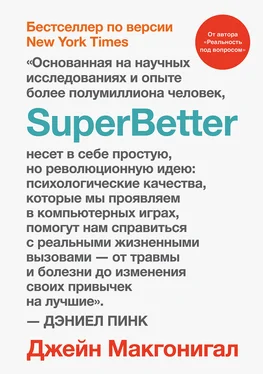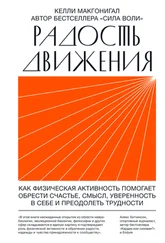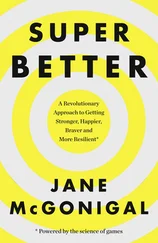Julianne Holt-Lunstad, Timothy B. Smith, J. Bradley Layton . Social Relationships and Mortality Risk: A Meta-Analytic Review // PLOS Medicine. 2010. № 7 (7). e1000316.
Это два самых распространенных элемента научных показателей социальной поддержки, таких как «Многомерная шкала для оценки воспринимаемой социальной поддержки» (MSPSS), «Опрос по сети социальной поддержки» (SSNI), «Краткая оценка социальной поддержки» (BMSS) и «Опрос по социальной поддержке» (SSQ). См. Gregory D. Zimet et al. The Multidimensional Scale of Perceived Social Support // Journal of Personality Assessment. 1998. № 52 (1). P. 30–41; Joseph A. Flaherty, F. Moises Gaviria, Dev S. Pathak . The Measurement of Social Support: The Social Support Network Inventory // Comprehensive Psychiatry. 1983. № 24 (6). P. 521–529; Irwin G. Sarason et al. A Brief Measure of Social Support: Practical and Theoretical Implications // Journal of Social and Personal Relationships. 1987. № 4 (4). P. 497–510; Irwin G. Sarason et al. Assessing Social Support: The Social Support Questionnaire // Journal of Personality and Social Psychology. 1983. № 44 (1). 127 p.
Six Weeks of Superbetter. November 18, 2011. On the Media blog.
Alex Goldman . The Superbetter Diaries. On the Media blog.
Julianne Holt-Lunstad, Wendy A. Birmingham, Kathleen C. Light . Influence of a ‘Warm Touch’ Support Enhancement Intervention Among Married Couples on Ambulatory Blood Pressure, Oxytocin, Alpha Amylase, and Cortisol // Psychosomatic Medicine. 2008. № 70 (9). P. 976–985; Diana Lynn Woods, Margaret Dimond . The Effect of Therapeutic Touch on Agitated Behavior and Cortisol in Persons with Alzheimer’s Disease // Biological Research for Nursing. 2002. № 4 (2). P. 104–114; Ruth Feldman, Magi Singer, Orna Zagoory . Touch Attenuates Infants’ Physiological Reactivity to Stress // Developmental Science. 2010. № 13 (2). P. 271–278; Yu-Shen Lin, Ann Gill Taylor . Effects of Therapeutic Touch in Reducing Pain and Anxiety in an Elderly Population // Integrative Medicine. 1998. № 1 (4). P. 155–162; Tiffany Field et al. Cortisol Decreases and Serotonin and Dopamine Increase Following Massage Therapy // International Journal of Neuroscience. 2005. № 115 (10). P. 1397–1413; Tiffany Field et al. Brief Report: Autistic Children’s Attentiveness and Responsivity Improve After Touch Therapy // Journal of Autism and Developmental Disorders. 1997. № 27 (3). P. 333–338; Maria Henricson et al. The Outcome of Tactile Touch on Oxytocin in Intensive Care Patients: A Randomised Controlled Trial // Journal of Clinical Nursing. 2008. № 17 (19). P. 2624–2633; Matthew J. Hertenstein et al. Touch Communicates Distinct Emotions // Emotion. 2006. № 6 (3). 528 p.; Michael W. Kraus, Cassey Huang, Dacher Keltner . Tactile Communication, Cooperation, and Performance: An Ethological Study of the NBA // Emotion. 2010. № 10 (5). 745 p.
Manuel Barrera, Jr. Distinctions Between Social Support Concepts, Measures, and Models // American Journal of Community Psychology. 1986. № 14 (4). P. 413–445; Sheldon Cohen. Social Relationships and Health // American Psychologist. 2004. № 59 (8). 676 p.
Lynn M. Martire et al. Is It Beneficial to Involve a Family Member? A Meta-Analysis of Psychosocial Interventions for Chronic Illness // Health Psychology. 2004. № 23 (6). 599 p.
Miller McPherson, Lynn Smith-Lovin, Matthew E. Brashears . Social Isolation in America: Changes in Core Discussion Networks over Two Decades // American Sociological Review. 2006. № 71 (3). P. 353–375.
Нарратив — изложение взаимосвязанных событий, представленных читателю или слушателю в виде последовательности слов или образов. Прим. ред.
Я рекомендую следующие онлайн-генераторы имен www.seventhsanctum.com/index-name.php, а также полезную статью «Полезные советы по созданию имен супергероев и суперзлодеев» по ссылке www.springhole.net/writing/naming-superheroes-and-supervillains.htm.
P. Alex Linley et al. Using Signature Strengths in Pursuit of Goals: Effects on Goal Progress, Need Satisfaction, and Well-Being, and Implications for Coaching Psychologists // International Coaching Psychology Review. 2010. № 5 (1). P. 6–15.
Martin E. P. Seligman et al. Positive Psychology Progress: Empirical Validation of Interventions // American Psychologist. 2005. № 60 (5). 410 p.
Carmel Proctor, John Maltby, P. Alex Linley . Strengths Use as a Predictor of Well-Being and Health-Related Quality of Life // Journal of Happiness Studies. 2011. № 12 (1). P. 153–169.
Christopher Peterson, Nansook Park, Martin E. P. Seligman. Greater Strengths of Character and Recovery from Illness // Journal of Positive Psychology. 2006. № 1 (1). P. 17–26.
Список из 340 способов использования определяющих качеств личности см. по ссылке http://tayyabrashid.com/pdf/via_strengths.pdf.
Ethan Kross, Özlem Ayduk . Making Meaning Out of Negative Experiences by Self-Distancing // Current Directions in Psychological Science. 2011. № 20 (3). P. 187–191.
Ethan Kross et al. Self-Talk as a Regulatory Mechanism: How You Do It Matters // Journal of Personality and Social Psychology. 2014. № 106 (2). 304 p.
Kentaro Fujita et al. Construal Levels and Self-Control // Journal of Personality and Social Psychology. 2006. № 90 (3). 351 p.; Hedy Kober et al. Prefrontal-Striatal Pathway Underlies Cognitive Regulation of Craving // Proceedings of the National Academy of Sciences. 2010. № 107 (33). P. 14811–14816; Walter Mischel, Monica L. Rodriguez . Psychological Distance in Self-Imposed Delay of Gratification / in Rodney R. Cocking and K. Ann Renninger, eds., The Development and Meaning of Psychological Distance. Hillsdale, NJ: Lawrence Erlbaum Associates, 1993.
Kross, Ayduk. Making Meaning.
Kross et al. Self-Talk as a Regulatory Mechanism.
Özlem Ayduk, Ethan Kross . From a Distance: Implications of Spontaneous Self-Distancing for Adaptive Self-Reflection // Journal of Personality and Social Psychology. 2010. № 98 (5). 809 p.
Steven C. Hayes et al. Acceptance and Commitment Therapy: Model, Processes and Outcomes // Behaviour Research and Therapy. 2006. № 44 (1). P. 1–25; John D. Teasdale et al. Metacognitive Awareness and Prevention of Relapse in Depression: Empirical Evidence // Journal of Consulting and Clinical Psychology. 2002. № 70 (2). 275 p.
Читать дальше











